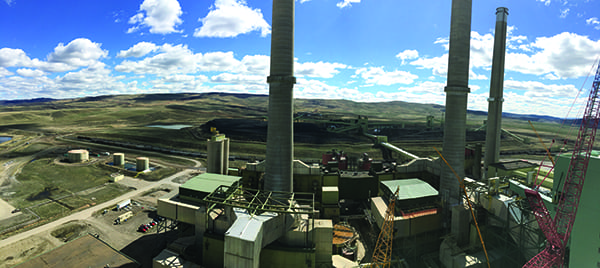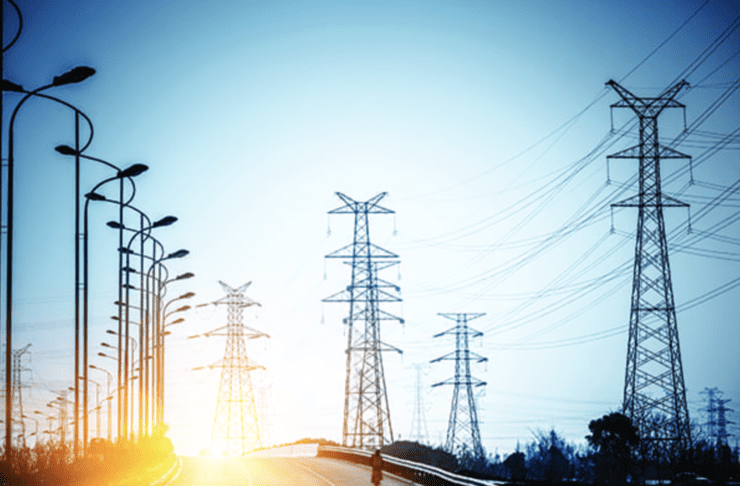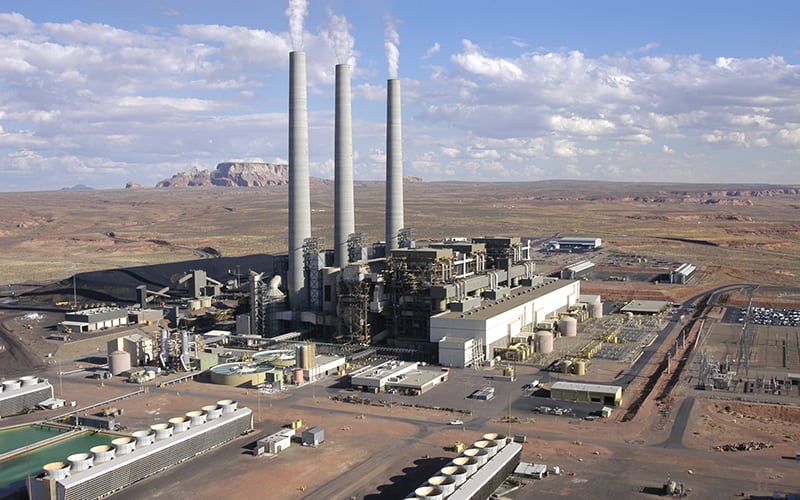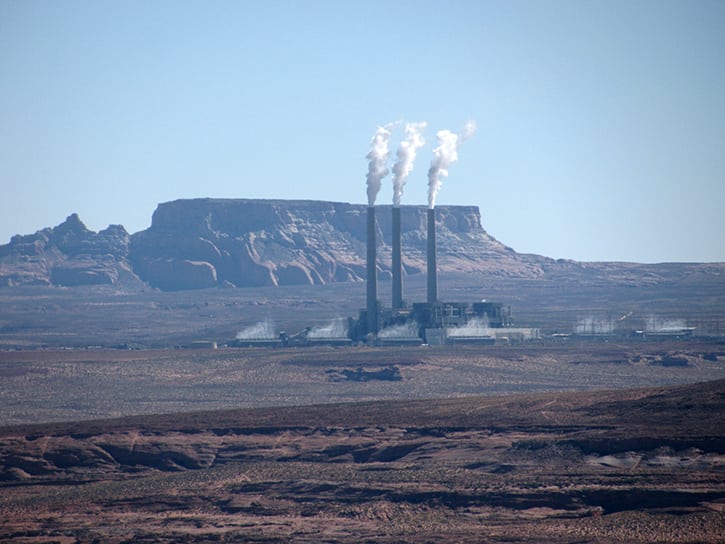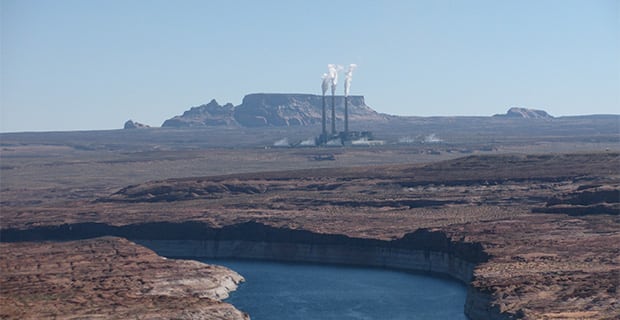Demolition of the Navajo Generating Station, a 2,400-MW coal-fired power plant that generated electricity for several cities in the U.S. Southwest, continued Dec. 18 as explosions brought down the facility’s three large smokestacks.
The plant was closed in November 2019. The NGS, located near Page, Arizona, is being demolished by Salt River Project (SRP). The station was the largest coal-fired power plant in the western U.S., and the three 775-foot-tall smokestacks towered above the surrounding countryside.
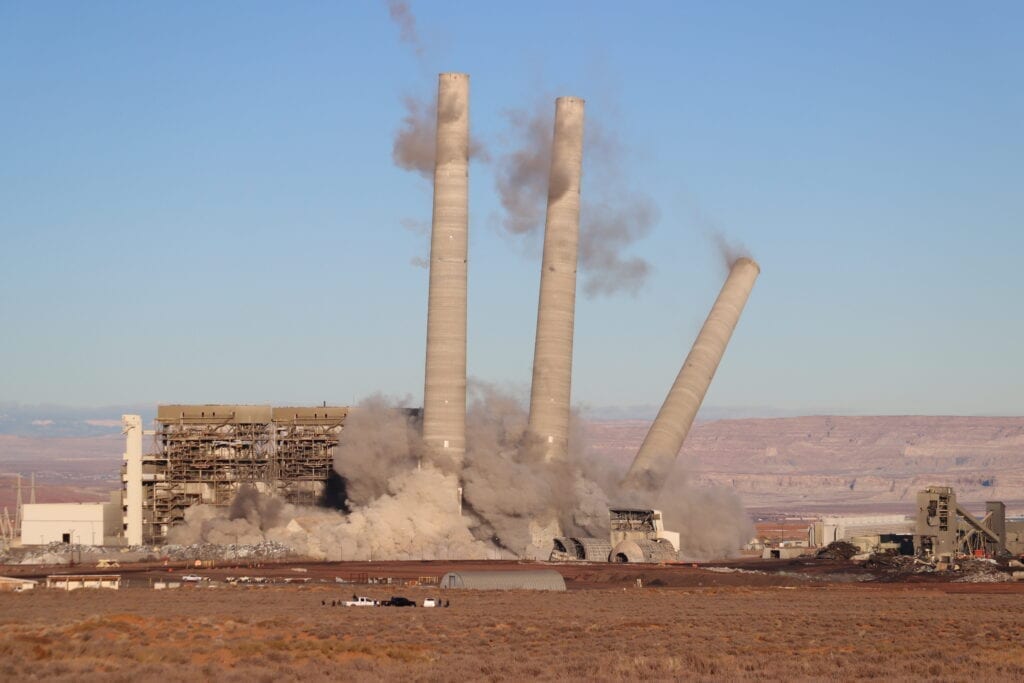
The plant, which generated power for Phoenix and Tucson, Arizona; Las Vegas, Nevada; and Los Angeles, California, along with other cities, also pumped water that helped spur the growth of the Phoenix metropolitan area. A livestream of the smokestacks’ demolition, with commentary in both English and Navajo, was produced by the Tó Nizhóni Ání group, and is available on the group’s Facebook page (demolition starts at 32:25).
The NGS was owned by several utilities—SRP, Arizona Public Service Co., Tucson Electric Power Co., and NV Energy—who voted in February 2017 to shut down the plant, which is located on tribal land near Page along the border with Utah. The utilities cited “rapidly changing economics of the energy industry,” including continued low prices for natural gas.
The plant’s low-sulfur bituminous coal came from the Kayenta Mine, located 78 miles away. The power plant is located on tribal trust lands leased from the Navajo Nation; the mine is located on tribal trust lands leased from the Navajo Nation and Hopi Tribe.
The Native American tribes said the facility had been a symbol for mistreatment of their tribes by the federal government; the federal Bureau of Reclamation was a participant in the NGS.
A statement from members of the Navajo and Hopi nations addressed the symbolic nature of the smokestacks’ demolition, saying, “It marks the close of a painful chapter for thousands of Navajo and Hopi whose lives and families have been impacted by coal. Until it closed last November, the 2,400 MW power plant generated electricity for Phoenix, Tucson, Las Vegas, Los Angeles and other cities, insultingly bypassing Navajo and Hopi homes and businesses. The plant also pumped the massive amounts of water that has allowed Phoenix to grow into the fifth largest city in America, all while thousands of Navajo and Hopi homes also lack access to running water.”
SRP officials said the three stacks were taken down simultaneously with a single explosive blast that contractors set in place. Contractors have been decommissioning the plant for the past year.
—Darrell Proctor is associate editor for POWER (@POWERmagazine).









